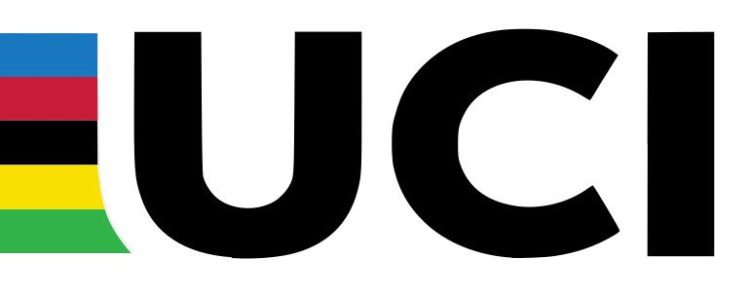Boosting Bone Health for Cyclists: Tips for Combatting Low Bone Density
By Christopher Schwenker
A new study reveals low bone density and osteoporosis often start in cyclists before age 20 and persist well beyond their riding years.
Cyclists: Here’s How to Keep Your Bones Strong
As avid riders, we can’t stress the virtues of cycling enough. The myriad benefits to fitness and overall wellness, providing an activity effective at strengthening our heart, lungs, legs, and brain, far outweigh the negatives. However, you might not realize that cycling alone provides minimal benefits for bone health.
Unlike weight-bearing activities such as running or strength training, cycling doesn’t place enough stress on bones to stimulate or maintain adequate bone density. When left unaddressed, low bone density can lead to a condition known as low bone density, increasing the risk of fractures and osteoporosis.
Let’s dive into why bone density matters for cyclists and what you can do to prevent bone loss.
The Link Between Cycling and Bone Density
Bone density refers to the mineral content in your bones, which helps determine their strength. The more dense the bone, the stronger it is.
However, cycling doesn’t typically put enough weight on your bones to encourage them to grow stronger. Cycling is considered a non-weight-bearing activity—you’re not supporting your body weight while riding, unlike activities such as walking or weightlifting, as discussed in this blog post, “Essential Strength Training Terminology for Cyclists.”
A May 2023 study in the Journal of the American College of Sports Medicine examined bone density in 93 elite cyclists across career stages.
Early Career: Among male racers under 20, 27% had low lumbar spine BMD, with no osteoporosis. For females, 45% had low spine BMD, and 10% had osteoporosis.
Advanced Career: Male racers over 20 showed 64% with low spine BMD, 73% with low total body BMD, and 46% with osteoporosis. Among females, 45% had low spine BMD, and 20% had osteoporosis.
Post Career: Retired male racers under 50 had 50% with low spine BMD and 20% with osteoporosis. Females showed 20% with low spine BMD, but none had osteoporosis.
Several studies have pointed out that cyclists, especially those who train intensively, tend to have lower bone density than athletes who engage in weight-bearing activities. One study published in Bone and Joint Research found that elite cyclists had lower bone mineral density than runners, who benefit from their sport’s weight-bearing impact (Smith et al., 2020).
Why Low Bone Density Matters So Much To Cyclists
Low bone density is a serious concern because it increases your risk of fractures and injuries, especially as you age. Osteoporosis is when bones become brittle and fragile due to low bone density. It’s most common in postmenopausal women but can affect men as well. If you have low bone density, the risk of breaking bones, even from minor falls or impacts, rises significantly.
A study in The Lancet highlighted that athletes with low bone density are at an increased risk of stress fractures, particularly in weight-bearing bones like the spine and legs (Zhao et al., 2018). For cyclists, this could mean fractures from crashes, falls, or stress fractures from the repetitive motion over time that weakens bones.
What Cyclists Can Do to Protect Their Bone Health
So, what can cyclists do to maintain strong bones and prevent low bone density? Here’s a breakdown of strategies that can make a real difference:
- Incorporate Weight-Bearing Exercises: It’s essential to include weight-bearing activities in your fitness routine to combat cycling-related bone loss. These exercises involve lifting your body weight or using external resistance, stimulating bone growth. For cyclists, this can be as simple as:
- Strength Training: Focus on exercises that target your legs, hips, and core, such as squats, lunges, and deadlifts. These movements help stress the bones in your lower body, promoting bone density.
- Walking or Jogging: While cycling doesn’t stimulate your bones as much, activities like walking or light jogging do. Aim for 20-30 minutes a few times weekly to get your bones moving.
- Resistance Bands: Adding resistance bands to your routine can help build strength and stimulate bone activity, particularly in the lower body.
- Don’t Skip Leg Day: While cyclists often have well-developed legs, strength training is vital to supporting your bones. Strong muscles reduce the load on your bones and prevent injury by improving your overall body mechanics. Plus, strength training boosts muscle mass, another factor that helps preserve bone health.
Aim to include full-body strength training two to three times a week for optimal results. Compound exercises such as squats, lunges, deadlifts, and bench presses engage multiple muscle groups, improving muscle mass and stimulating bone density.
- Ensure Adequate Calcium and Vitamin D Intake: Calcium and vitamin D are essential for bone health. Calcium helps build and maintain strong bones, while vitamin D aids calcium absorption. Without enough calcium, your bones can become weak and more prone to fractures. Vitamin D is also crucial for maintaining bone density, as it helps your body absorb calcium effectively.
The recommended daily intake for calcium is around 1,000 mg for most adults, increasing to 1,200 mg for women over 50 and men over 70. Vitamin D should be around 600-800 IU, which may vary depending on your location and lifestyle. Consult a physician for the recommendation that is right for you.
You can get calcium from dairy products, leafy greens, fortified plant-based milk, and nuts. The best source of Vitamin D is from sunlight exposure, but you can also get it from fatty fish, egg yolks, and fortified foods.
- Consider Bone-Specific Supplements: Supplements might be helpful if you struggle to meet your calcium and vitamin D needs through food alone. Look for supplements containing calcium and vitamin D3, as this combination supports better absorption. Talking to your healthcare provider before adding supplements is essential, as too much calcium can lead to other health issues.
- Stay Active Out of the Saddle: To strengthen your bones, incorporate a variety of movements into your daily routine. Consider adding a walking routine, yoga, or Pilates into your weekly schedule. These activities help engage different parts of your body, which can provide the bone-stimulating effects that cycling alone can’t offer. Take this Core Strengthening Routine, for example.
- Get a Bone Density Test: If you’re concerned about your bone health, it may be a good idea to talk to your doctor about getting a bone density test. It will help you understand your current bone health and determine whether you need to take action to prevent further bone loss. Early intervention can be vital in avoiding more severe problems down the road.
It’s Not Too Late: Low Bone Density in Cyclists Can Be Prevented and Treated
While cycling offers numerous benefits for your cardiovascular health, it’s important to remember that it doesn’t provide all the support your bones need. Low bone density is a genuine concern for cyclists, but the good news is that you can take proactive steps to protect and strengthen your bones. By incorporating weight-bearing exercises, strength training, ensuring proper nutrition, and staying active outside of cycling, you can help mitigate the risks of low bone density and stay strong on and off the bike. Remember, bone health is a lifelong commitment, so it’s never too early to start!
About the Author
After over twenty years as director of his private physical therapy practice, Chris stepped away to pursue his passion for virtual cycling and writing. He founded TheZommunique.com, the leading source of independent cycling esports journalism, is a frequent contributor to Cycling Weekly, Cycling News, and road.cc, and co-hosts The Virtual Velo Podcast. He cycled 3,900 miles across the US in 2022 to support his virtual cycling non-profit, The DIRT Dad Fund.






















